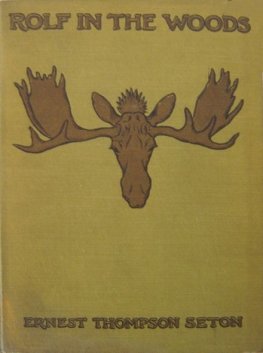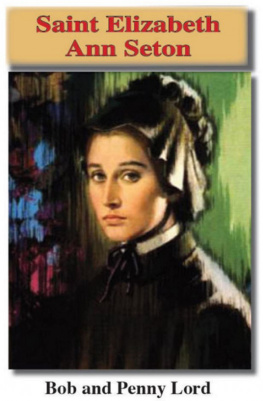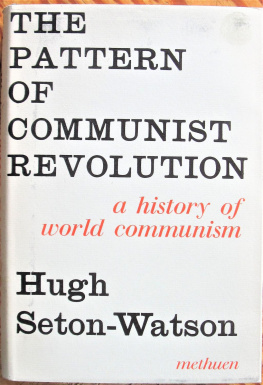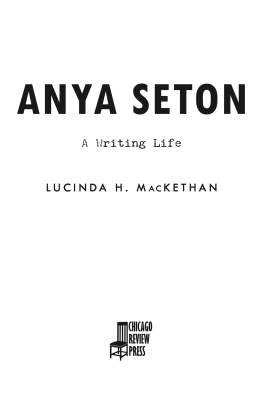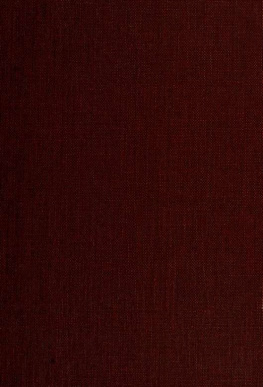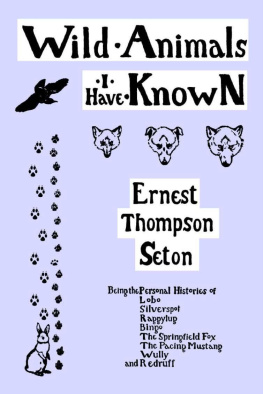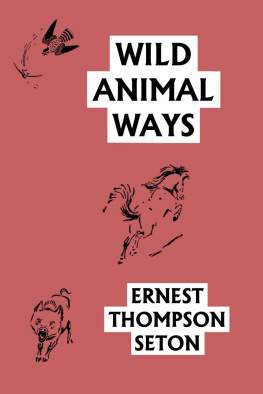The Road to El-Aguzein
This book is dedicated to the memories of
Jessie Webb
Margaret A. Murray
Tessa Verney Wheeler
The Road to El-Aguzein
M. V. Seton-Williams
First published in 1998 by
Kegan Paul International
This edition first published in 2011 by
Routledge
2 Park Square, Milton Park, Abingdon, Oxon, 0X14 4RN
Simultaneously published in the USA and Canada
by Routledge
711 Third Avenue, New York, NY 10017
Routledge is an imprint of the Taylor & Francis Group, an informa business
M.V.Seton-Williams, 1998
All rights reserved. No part of this book may be reprinted or reproduced or utilised in any form or by any electronic, mechanical, or other means, now known or hereafter invented, including photocopying and recording, or in any information storage or retrieval system, without permission in writing from the publishers.
British Library Cataloguing in Publication Data
A catalogue record for this book is available from the British Library
ISBN 10: 0-7103-0286-X (hbk)
ISBN 13: 978-0-7103-0286-1 (hbk)
Publishers Note
The publisher has gone to great lengths to ensure the quality of this reprint but points out that some imperfections in the original copies may be apparent. The publisher has made every effort to contact original copyright holders and would welcome correspondence from those they have been unable to trace.
Contents

Acknowledgements
I would like to thank the following people: the family of Harry Riley for permission to reproduce one of his first water colours on the jacket - it was painted during the First World War on the coast of Palestine, while he was in the Sharpshooters; the National Gallery of Victoria for permission to reproduce The Synnot Children by Joseph Wright, painted in 1781, portraying my great-grandfather Walter Synnot; Barbara Falk for supplying information from the archives of Melbourne University; my cousin, Christopher Staughton, who researched the Staughton family tree; Dr Young who put the family trees on her word processor; my cousins Patsy Hawker and Helen Harris for information about the Synnot family; Stephanie Gee for typing the first draft of my manuscript, Penny Rhodes who typed the second draft with Angela Godfrey who also drew the map and rendered invaluable assistance in collating all the material for publication; Brian Stinton who drew the map; Barbara Sharp and Anne Pemberton who helped to get it published; Penny Clarke and Kim Worts for their work on editing and Peter Hopkins of Routledge and Kegan Paul Ltd. Finally to the passengers on Swans Nile Cruises who were always asking me to write my autobiography and without whose encouragement it would never have been done.
Balsham 1988
Introduction
My adult life has been spent to a large extent in and around the Middle East. From the spring of 1934, when I first set eyes on the spectacular backdrop of the hills behind Aden and passed through the Suez Canal with the dun-coloured desert stretching out on either hand, I have been committed to this region, its people and its places - an area which has been the scene of wars, rebellions, riots, civil wars, floods and earthquakes. As an archaeologist my main interest was in getting on with my job, to finish whatever I was doing, to record it and, if possible, to publish the results. However, Middle Eastern archaeologists are not always masters of their fate and this is particularly true for Egyptologists. Internal and external events beyond their control often prevent well laid plans and carefully thought out arrangements coming to pass. It has therefore been necessary in the following pages to add some historical comments as background to the events recorded to make them more intelligible, or to explain why it was sometimes impossible to return to finish work already begun. In addition, our expeditions were constantly plagued by lack of funds to carry out our work.
I owe much to my teachers and colleagues, the men and women whose vision led me to pursue the course I did, although I came to Egyptology by choice, not by accident as so many of my colleagues and contemporaries did. But more than to my teachers do I owe a debt to the people in whose lands I had the privilege and pleasure of working the Arabs, the Egyptians, the Greeks, the Turks - without whom the work would have been impossible and with whom it was both a pleasure and a joy.
Aleppo 1979Cairo 1986
Chapter One
Forbears
I believe far more in heredity than in environment. Both help but one is predominant. I would not be what I am if I had not had the parents and grandparents that I had and through whom I have inherited whatever skills I possess.
I was born on 20 April 1910, in Melbourne, Australia, early on a Wednesday morning to very disparate parents. My father, a lawyer, was a short, black-haired, blue-eyed Celt, my mother was a tall, fair, grey-eyed East Anglian. My father was fond of horses and hunting though he had given up the latter by the time I knew him. He had come to the Australian Bar late, having spent his early youth as a kangaroo hunter in the bush and only taken up law in middle age. Even so he must have been extremely fit as he won the high jump at Melbourne University when he was nearly forty. He was not really suited to city life and was, I think, only too glad when we moved out into the country when I was small. He used to take me to the horse sales at Kirks Bazaar, long since demolished, and on Saturday afternoons down to the Melbourne Docks to see the tall sailing ships at anchor - this was long before the days of the grain races were over.
When I was about eight or nine I was taken by my mother to an exhibition about the clipper ships in a Melbourne gallery, where I met an old sea captain who was surprised to find a little girl taking such an interest in the history of the clippers. After talking to me for some time he invited us to his home in Williamstown for tea. I was delighted when my mother accepted as I was doubtful that she would. The following week we went to his little cottage which was entirely filled with pictures of sailing ships I was enthralled, and so was my mother, a keen gardener, because in his garden was a blue poppy, brought by one of his relations from the Himalayas.
I know nothing of the early history of my paternal grandfather, Montague Williams, save that he was brought up somewhere in Wales by two maiden aunts, his parents apparently having died. There was sufficient money for him to be educated at Oxford and to take Holy Orders; he must have been ordained before he left England and had a parish of his own, as there is a record in the family that his parishioners presented him with an inscribed silver tray on his leaving for another sphere. He was sent out to Australia as one of six Church of England clergymen to minister to the garrison and convicts. In fact he went to Van Diemens Land, now Tasmania. On 5 March 1846 he was ordained Deacon in St Davids Cathedral, Hobart, by Bishop Nixon, the first Bishop of Tasmania. Five days later he was appointed Minister and Chaplain of Deloraine, in the parish of Calstock, Tasmania. While he was minister there he married, on 11 February 1851, Marianne (known as Maria) Synnots, the second daughter and seventh child of Walter Synnots, Captain of the 66th Regiment of Foot (later the Berkshire Regiment).








